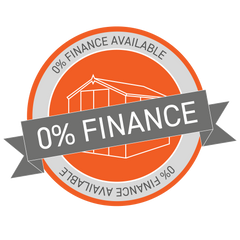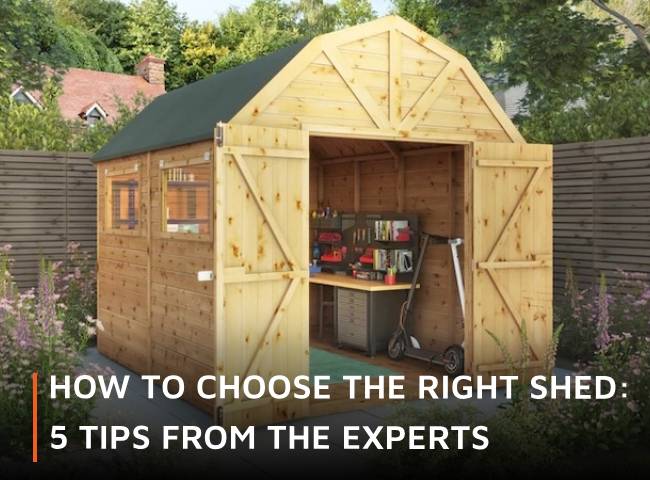When it comes to choosing a shed, the options are almost endless. With so many different shapes, sizes and configurations available, picking the perfect shed for your needs can feel a bit overwhelming. But don't worry – we're here to lend a hand. We've gathered some practical advice from our favourite gardening and lifestyle influencers to help you with all the essential decisions. Here are their five top tips for buying a shed…
In the meantime, browse our full range of high quality sheds for plenty of inspiration.
1. Define the main purpose of your shed
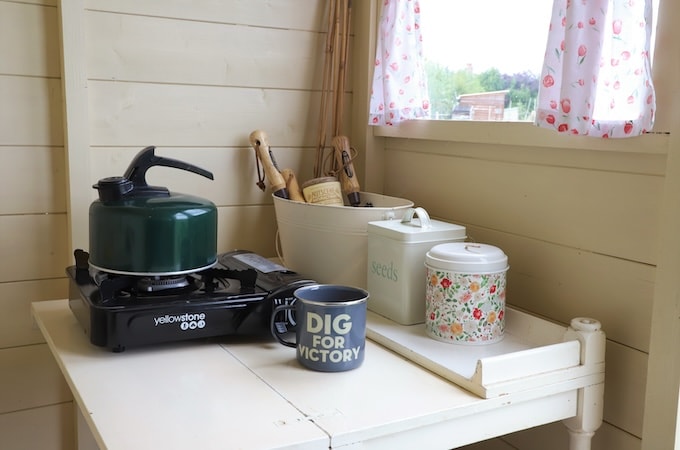
Image: Allotment Haven
Before you take the plunge and choose a new shed, you really need to give full consideration to all the ways you intend to use it. A shed can fulfil a range of purposes including garden storage, as a base at your allotment or as a DIY workshop. Being clear about the purpose will help you choose the features you need.
“A shed is a big investment so have a good think before you buy,” advises blogger Claire Burgess of Claire’s Allotment. She also emphasises that a shed can be anything you want it to be.
“Some people say, ‘Oh, it’s just a shed’, but how wrong they are,” says Claire. “A shed is an extension of your life, so have fun with it and make it your own.”
With this in mind, Claire offers a few suggestions. “It can be made into a cosy sewing room where you go and sit for a bit of peace and quiet. It can be a reading room with an armchair and cushions with a small table and a lamp. It can be a potting shed with compost and pots all over the place.”
Of course, there’s no reason why your shed can’t fill more than one purpose, combining both practicality and comfort. Instagrammer Greg Holton of @greggrowsuk says: “Personally I like to use my shed as a quiet space – so enough room to sit with a book and store your tools is essential.” But thinking as a keen vegetable grower, Greg also uses his shed to catch precious rain water for his plants. He prefers a model with a large sloping pent roof “as one gutter at the rear can supply two water butts.”
And speaking of wet weather, Alan James Wooldridge of the blog Alan’s Allotment – ManVslug.uk reminds us to “allow an area for making tea and coffee and sitting out of the rain”!
2. Go for a versatile design

Image: My Thrifty Life by Cassiefairy (photographer: Andy Greenacre)
Since we’ve established that a shed can serve many different purposes – sometimes at the same time – it makes sense to strive for versatility when making your choice. Think about how you will be able to adapt the design to suit your needs.
“A shed is a shell,” says Claire Burgess of Claire’s Allotment. “Once constructed, you can put in any shelves and work areas you need.”
She also reminds prospective workshop shed owners: “Depending on what you need your shed for, you may need to put in some electricity so you can have plug sockets and lights.”
Fellow blogger Adam Leone of Carrot Tops Allotment believes versatility can be maximised with a minimalist approach.
He says: “This is an unpopular opinion, but I prefer to keep shelves to a minimum – the reason being, the more shelves you have, the more things you tend to accumulate and, before you know it, you're inundated with stuff you think you need (but you don't) and then you have to clear it all out.”
Adam believes a shed’s design should enable “a symphony of movement, not a waste of efficiency”, and is a strong advocate of function over form. “You don't want to be tripping over anything, and nothing should be in the way,” he explains.
A focus on versatility should also extend to future use of your shed. Cassiefairy, author of the blog My Thrifty Life originally bought a shed to store DIY tools and materials while she was renovating her ‘fixer-upper home’. However, the shed proved its value long after its original purpose had been fulfilled.
“Even though we’ve finished renovating the house, the shed is still a handy space to store leftover paint, plumbing supplies, power tools, cleaning items and so on,” she says.
3. Buy the biggest shed you can

Image: 12x8ft overlap apex garden shed from Waltons
When it comes to size, the consensus is very clear: bigger is better. Alan of ManVslug.uk says: “Whatever size you think you are going to need, increase it by about 20%.”
The benefits of a big shed speak for themselves, but as an example, Alexandra Campbell of The Middlesized Garden blog chose the biggest shed her space would allow and it meant she was finally able to transfer bike storage from house to garden.
“The extra two feet of width plus the extra few inches on the length has transformed our garden storage,” she says. “As well as the garden chairs and the barbecue, we can also store three bikes, several brooms and a large folding table. We can walk into it easily, too.”
Adam of Carrot Tops Allotment recommends measuring everything you intend to put in the shed to make sure it fits. He also says: “This is going to seem excessive, but if you can fit in a 11ft by 8ft shed in the space, then go for it. It's enough room to get a lawnmower in, and be able to turn it, which would be the same for any bikes or any other bulky items.
“Additionally, if you don’t use the space for storage, then it doubles up as a mini work area, which helps to keep everything contained,” he adds.
Despite the advantages of bigger designs, there are space constraints you might have to consider depending on your shed’s purpose. “The best size shed for an allotment is one that doesn't take over too much growing space,” says Adam.
On that subject, Alan of ManVslug.uk points out that allotment sheds are sometimes subject to size rules and restrictions. His advice is: “Check the maximum size you are allowed; buy the maximum size you are allowed.”
Adam of Carrot Tops Allotment also reminds shed buyers that they’ll need about a foot of space around the outside of the shed. “This is required for full maintenance and painting so it’s best to take this into account when measuring up the space for your shed,” he advises.
And whatever you do, don’t ignore the amount of room you’ll need to fit yourself in the shed! “Being tall, I’ve always gone for a shed at least 7ft high,” says Greg of @greggrowsuk.
4. Buy the most robust shed you can afford
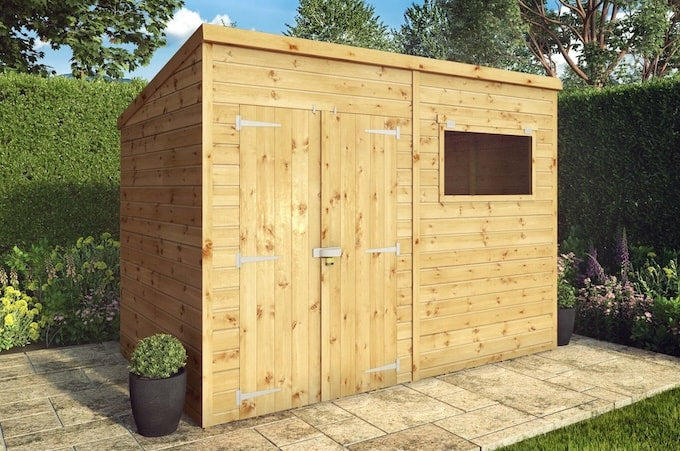
Image: 10x6 Premium Shiplap Pent Shed from Waltons
Picking the right shed is hard enough without having to do it all again, so making sure your choice is strong enough to last is a sensible long term investment.
There is, of course, the UK weather to consider, and it also pays to be security conscious. “You’ll need a shed that can be locked securely,” advises Claire of Claire’s Allotment. This is sound advice for all sheds, whether located in a garden or allotment, but especially important for the latter.
“Allotment sites are usually very exposed so you will need to make sure that your shed is safe, not only from the strong winds but also from thieves who may come on the site and try to break into sheds,” Claire advises.
Her preference is for a wooden shed with a pitched roof that allows the rain to run off easily.
While wooden sheds are a popular choice, the advice of Alan of ManVSlug.uk is to select a material – timber, metal or plastic – based on “how much maintenance and life expectancy against cost and budget”.
For a wooden shed, Alan recommends taking the time to “treat the floors and all the panels yourself, inside and out, before you erect it.”
Claire stresses the importance of adding felt to the roof if you choose a wooden shed, as well as making sure the whole structure is secured on a solid base. “Concrete is best,” she says.
But Alan points out that in-situ concrete might not be allowed on an allotment – in which case, “make sure you don’t skimp on getting a decent level of paving slabs for the shed.”
5. Don’t forget to consider doors, windows and warmth
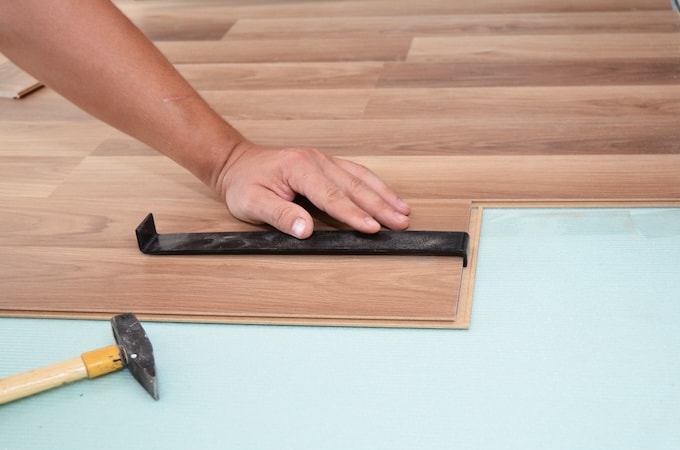
Image: Shutterstock
A door for your shed might sound like a no-brainer, but – as with the shed itself – there are many configurations to choose from. Positioned in the side or at one of the ends, double doors help with access but reduce the amount of storage space for shelves. For her wooden shed with an apex roof, Cassie from My Thrifty Life wanted a set of double doors set into the longest side of her shed “so that it was easy to open them up wide and see everything easily”.
Alan from ManVSlug.uk (who, just for the record, favours a pent roof) agrees that “you may want larger or double doors to get stuff in and out easier.”
Window choice, however, very much depends on the purpose of the shed and windowless options are often chosen where security is an issue. “Personally, if the shed is just being used for storage, you have to ask the question of whether you actually need any windows,” says Alan.
But according to Adam Leone of Carrot Tops Allotment, if you plan on having any staging, or want to use the shed as a work area or workshop, then windows and natural lighting are essential. “They prevent the shed from feeling like a cave,” he says.
When it comes to warmth, insulation is the name of the game. YouTube is a mine of information on this.
The Benji’s Hobbies channel, for example, details how insulation helped turn a garden shed into a dream hobby space. Watch the video to see how he cuts insulation panels to size and transforms a neglected storage space into somewhere really special to spend time.
Phill Wyatt Projects, meanwhile, has helpfully posted a video on how to insulate a workshop shed and prevent condensation using aluminium bubble wrap. He likes to use his workshop all year round and shares lots of advice to help you do the same.
So there you have it – plenty of practical advice from people with a shed-load of experience! Made your choice? See our step-by-step guides to building shed bases including concrete, paving slab and wooden options to give your shed the best possible foundation.
Lead image: 10x8ft Premium Shiplap Dutch Barn Shed from Waltons


